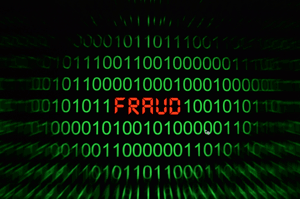 Fraud is one of the most common reasons cardholders file a chargeback. But within the category of fraud is a concept quite troubling – friendly fraud. Referred to as chargeback fraud or cyber shoplifting, this type of chargeback is difficult to detect and prevent.
Fraud is one of the most common reasons cardholders file a chargeback. But within the category of fraud is a concept quite troubling – friendly fraud. Referred to as chargeback fraud or cyber shoplifting, this type of chargeback is difficult to detect and prevent.
What is Chargeback Fraud?
Chargeback fraud occurs when a cardholder actually made the purchase but later claims the transaction was not authorize. Other times, a friendly fraudster claims the product or service was never delivered – even though it was.
As is the case with any other chargeback, the cardholder requests a refund from the issuing bank. And just like any other chargeback, the merchant holds the burden of proof. If the merchant is not able to prove the chargeback has been filed fraudulently, the bank will cancel the original transaction, the funds will be withdrawn from the merchant’s account, and fines will be assessed.
Chargeback Fraud is on the Rise
According to one study, merchants are adamant friendly fraud is on the rise. In fact, merchants estimate more than 60% of all fraud claims are actually friendly fraud. A study from 2012 reports that merchants pay $2.33USD for every $1 lost in fraudulent transactions.
The widespread popularity of the internet has brought about an increase in card-not-present transactions. Since these types of transactions are especially easy to label as unauthorized, chargeback fraud is growing in popularity.
How Merchants Can Fight Back
In general, merchants must strive for top-notch customer service and vigilant fraud detection in order to prevent chargebacks. However, there aren’t many suggestions on combatting friendly fraud.
Since this type of fraud doesn’t follow the normal patterns of criminal activity, it is more difficult to recognize. And since even the happiest customer can make an about-face, enhanced customer service practices won’t deter many of these friendly criminals.
Some merchants are opting for prepaid cards as the sole form of payment. While this roadblock significantly cuts down on the number of qualified customers, it does virtually eliminate chargebacks.
Other companies insist upon signature confirmation for delivery. This will help cut down on friendly fraud, but does little to deter actual criminals.
Since chargeback fraud abounds in the digital product market, some merchants are becoming proactive. They create a feature within the product that allows them to determine if the item has been successfully downloaded. Some also suspend service if a chargeback has been filed. This will help the merchant dispute chargebacks, but won’t help avoid the chargeback fee.
When to Fight and When to Surrender
For the merchant, chargebacks are an administrative and financial nightmare. They chip away at the bottom line and take valuable time to resolve. Therefore, it is essential to know which chargebacks to dispute and which to simply chalk up as a loss.
It is suggested that merchants fight chargeback fraud that comes with the following stipulations:
- If you suspect friendly fraud from a previously satisfied customer.
- If you have reasonable proof of friendly fraud on high dollar purchases.
- If you have signature confirmation or can track the shipping process.
It is best to simply pay the chargeback if…
- You suspect true fraud.
- You don’t have solid, written documentation that verifies your claim.
- The original transaction was for a low dollar item.
Monica Eaton-Cardone is co-founder of Chargebacks911.
